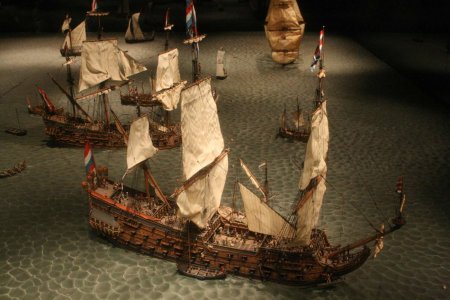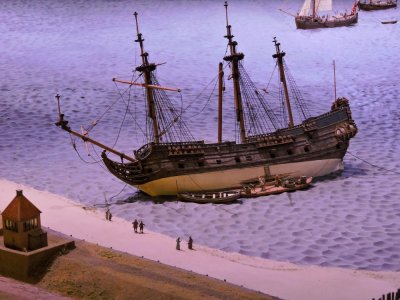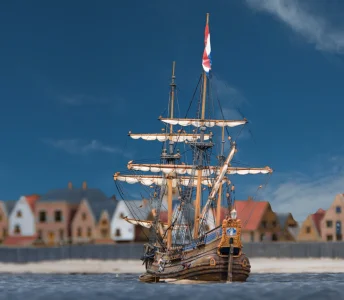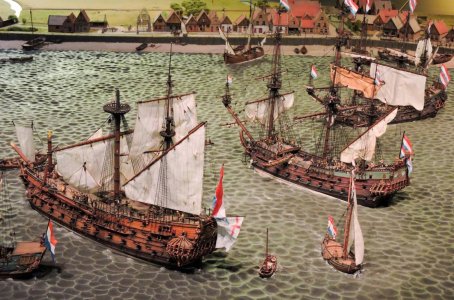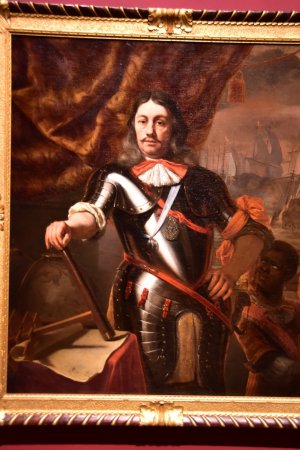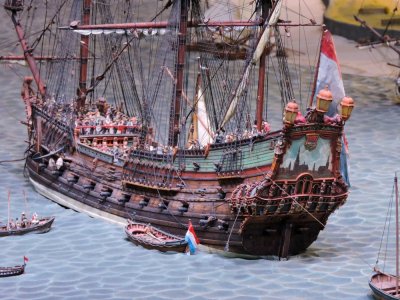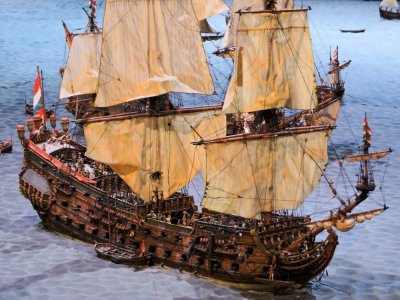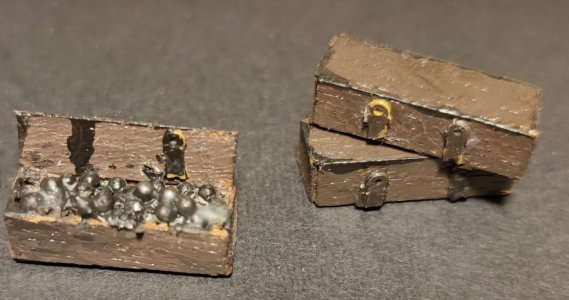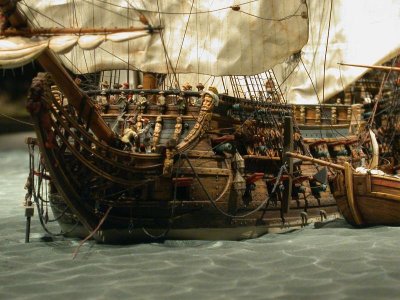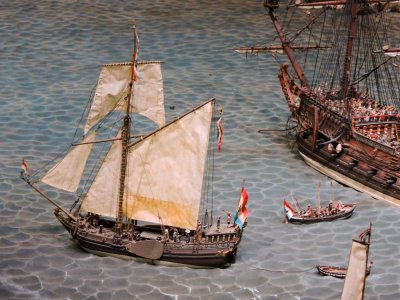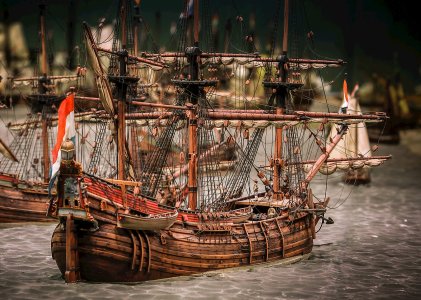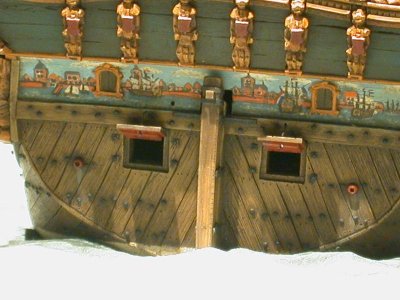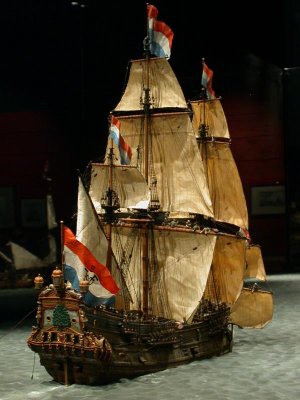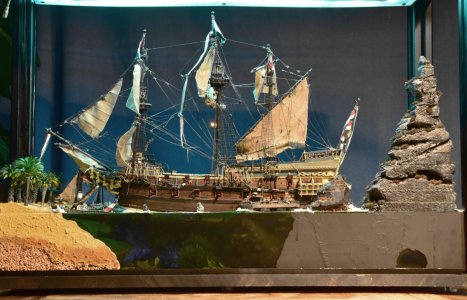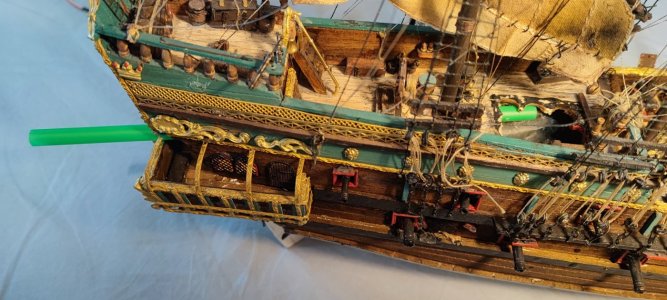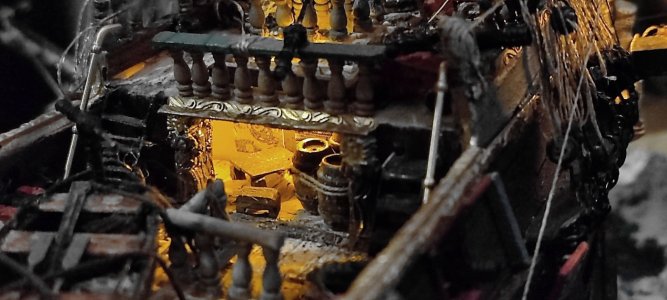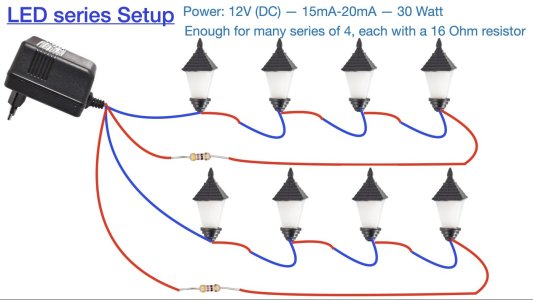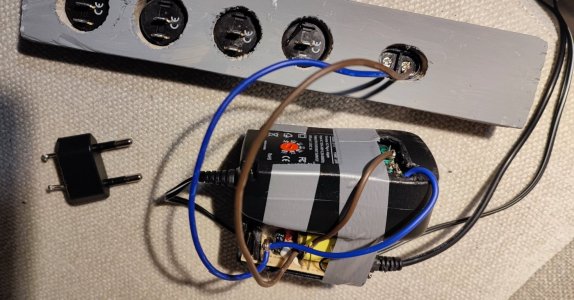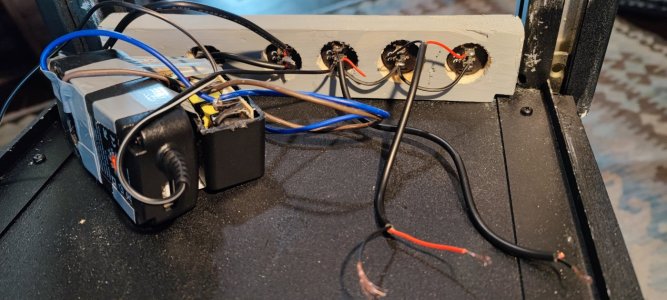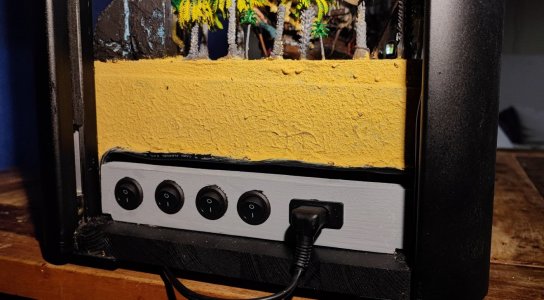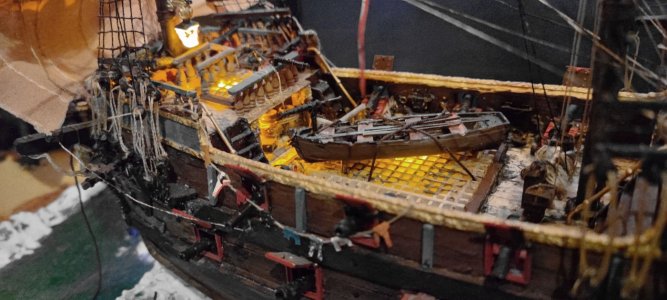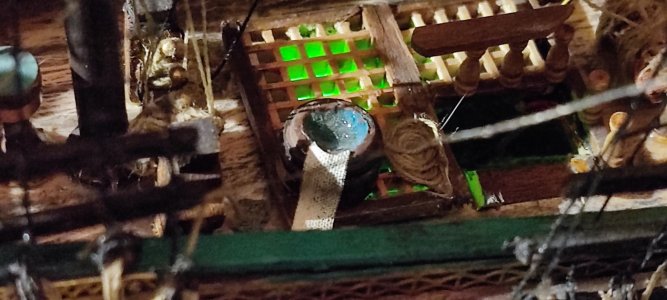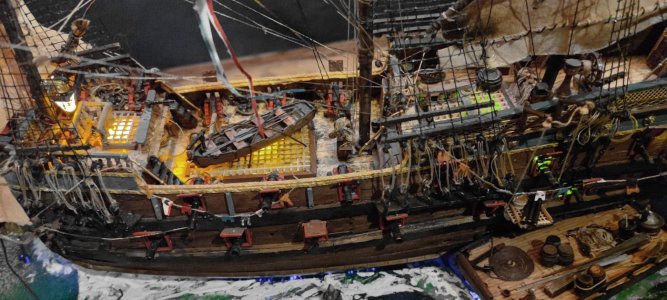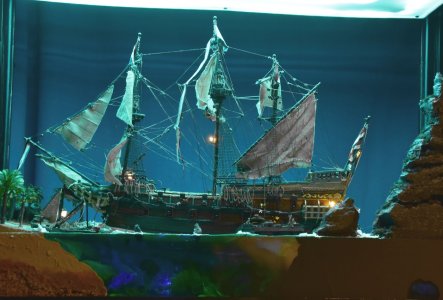- Joined
- May 1, 2025
- Messages
- 17
- Points
- 48

THE INGREDIENTS
Three hundred readers, I'm honoured! Here is the last of my three equipment images.
Wouldn't I like to have a master shipwright's bits 'n' bobs drawer, such as from the genius Hubac’s Historian on this forum? I'm sure I could make a ship just from his leftovers. https://shipsofscale.com/sosforums/members/hubac’s-historian.8032/
My ship&diorama ingredients speak for themselves. Amati is a good, affordable supplier of gun ports, cannon, ladders and stairs, ornamented strips -- anything made of metal, really. Sometimes I get the scale wrong, but those I'll bury in the sea bed as treasures.
Mod Podge is decent for water sculpting and it comes in a generous jar. The Vallejo brand is superior in my experience: it gives me crystalline transparency, while AK provides the opposite: wild foam.
The mini-wreck, I put together plank for plank, but the hull of the captain's boat is one metal form; I'm not much of a masochist. In the board gamers scene, who have a shop and player's club in every city, I purchase tufts of grass, tiny gravel, and for the beach a sand imitator that basically resembles solidifying peanut butter. It is stunning how some of those players construct, paint, and ornament their pawn hobgoblins or witchland game maps.
I buy the cheapest Chinese boat set in the same 1:100 scale as my Ochre Galleon, which is an affordable way to get extra sails, deck grids, planks, and a few guns. I have decided to give my galleon an extra gun deck, plus two shooting out the stern, to go from the buccaneer's 12 cannon to 29 in my Dutch galleon.
Collapsible beading needles are astonishing to work with, so much better than regular needles. It, and nylon thread, comes from the tailor's shop. From the 1970s I have always kept a bag of water-esque globules that harden when boiled; let's see if that still works. The product is still on the market, I see.
Fine but hard gauze for use in air filters will be my fishing net. Then, a hundred architectural figures for building mockups arrive together in a box; I choose the best eight of them with suitable body positions to be my swimmers, crow's nest watchmen, and sleepers on the beach.
My megalodon lurking under the ship is a 3-D printed beaut. I find it on Etsy in landlocked Slovakia, of all places.
Finally, a visit to a model railway shop gets me water sheets, rock sheets, fake rocks, and 1:87 (H0 scale), tiny dogs, cats, and sea birds. I absolutely must have a beagle on deck, her nose in the evening breeze.
With a box cutter, I slice diagonal lines in the surface of the blue sculpting foam slabs. Then I deepen and soften those sharp slits by rubbing a small stone along them. The deeper crevices are painted dark and the outer surfaces lighter. Glueing bits of this foam together is best done with an upholsterer’s glue spray that spews out creepy silvery nets of goo that stick like hell. I take care to lock my cats out of the room first.
Phosphorescent paint is produced from phosphorescent powder, so I buy the powder directly, in different hues, mix with latex paint, and brush it onto my water plants (bought in an aquarium and fish pet shop) and onto a set of 3D printed jellyfish that I will glue to the bottom side of the water sheet, to be suspended in LED light.
Finally, four big fat plastic decorative pine branches used in fake floral arrangements from a Christmas decoration shop, each as big as my hand, are just right for coarse weedy underwater plants, also to hide the wiring under.
Almost a month flies by on watching diorama modelling video's; they are so addictive. Then I search online for the best beach & ocean pictures, bird's eye view, and my son and I start to sculpt with Vallejo, AK, and Mod Podge, and spread the chemical peanut butter on the beach, and try to make it all look like a convincing, miniature, frozen reality. You be the judge, dear reader.
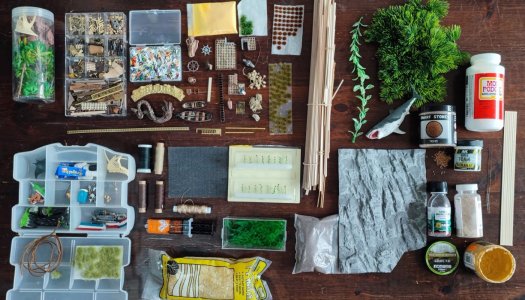
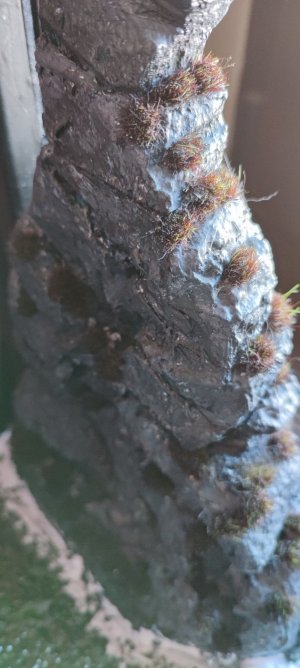
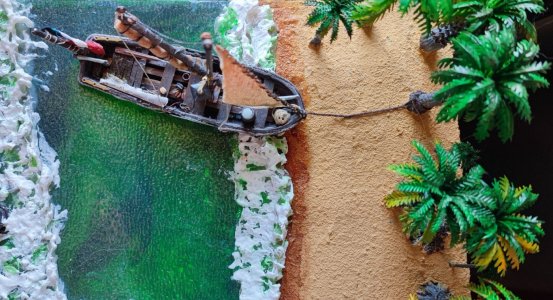
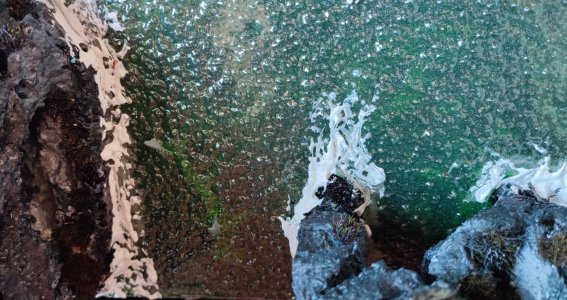
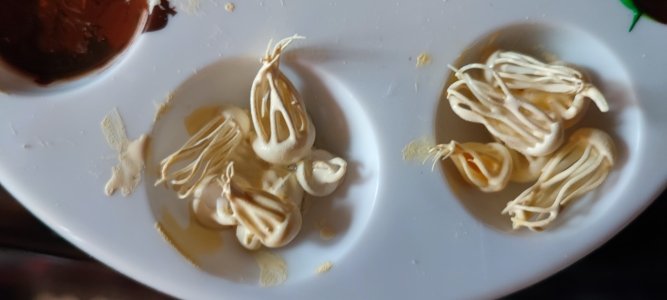
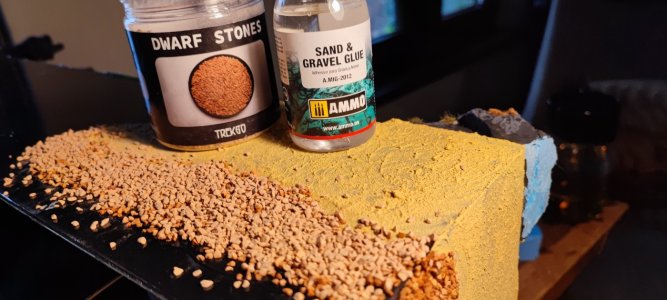
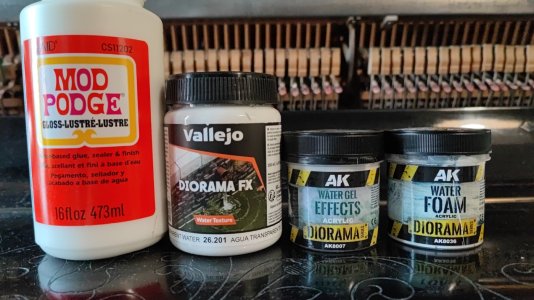
Three hundred readers, I'm honoured! Here is the last of my three equipment images.
Wouldn't I like to have a master shipwright's bits 'n' bobs drawer, such as from the genius Hubac’s Historian on this forum? I'm sure I could make a ship just from his leftovers. https://shipsofscale.com/sosforums/members/hubac’s-historian.8032/
My ship&diorama ingredients speak for themselves. Amati is a good, affordable supplier of gun ports, cannon, ladders and stairs, ornamented strips -- anything made of metal, really. Sometimes I get the scale wrong, but those I'll bury in the sea bed as treasures.
Mod Podge is decent for water sculpting and it comes in a generous jar. The Vallejo brand is superior in my experience: it gives me crystalline transparency, while AK provides the opposite: wild foam.
The mini-wreck, I put together plank for plank, but the hull of the captain's boat is one metal form; I'm not much of a masochist. In the board gamers scene, who have a shop and player's club in every city, I purchase tufts of grass, tiny gravel, and for the beach a sand imitator that basically resembles solidifying peanut butter. It is stunning how some of those players construct, paint, and ornament their pawn hobgoblins or witchland game maps.
I buy the cheapest Chinese boat set in the same 1:100 scale as my Ochre Galleon, which is an affordable way to get extra sails, deck grids, planks, and a few guns. I have decided to give my galleon an extra gun deck, plus two shooting out the stern, to go from the buccaneer's 12 cannon to 29 in my Dutch galleon.
Collapsible beading needles are astonishing to work with, so much better than regular needles. It, and nylon thread, comes from the tailor's shop. From the 1970s I have always kept a bag of water-esque globules that harden when boiled; let's see if that still works. The product is still on the market, I see.
Fine but hard gauze for use in air filters will be my fishing net. Then, a hundred architectural figures for building mockups arrive together in a box; I choose the best eight of them with suitable body positions to be my swimmers, crow's nest watchmen, and sleepers on the beach.
My megalodon lurking under the ship is a 3-D printed beaut. I find it on Etsy in landlocked Slovakia, of all places.
Finally, a visit to a model railway shop gets me water sheets, rock sheets, fake rocks, and 1:87 (H0 scale), tiny dogs, cats, and sea birds. I absolutely must have a beagle on deck, her nose in the evening breeze.
With a box cutter, I slice diagonal lines in the surface of the blue sculpting foam slabs. Then I deepen and soften those sharp slits by rubbing a small stone along them. The deeper crevices are painted dark and the outer surfaces lighter. Glueing bits of this foam together is best done with an upholsterer’s glue spray that spews out creepy silvery nets of goo that stick like hell. I take care to lock my cats out of the room first.
Phosphorescent paint is produced from phosphorescent powder, so I buy the powder directly, in different hues, mix with latex paint, and brush it onto my water plants (bought in an aquarium and fish pet shop) and onto a set of 3D printed jellyfish that I will glue to the bottom side of the water sheet, to be suspended in LED light.
Finally, four big fat plastic decorative pine branches used in fake floral arrangements from a Christmas decoration shop, each as big as my hand, are just right for coarse weedy underwater plants, also to hide the wiring under.
Almost a month flies by on watching diorama modelling video's; they are so addictive. Then I search online for the best beach & ocean pictures, bird's eye view, and my son and I start to sculpt with Vallejo, AK, and Mod Podge, and spread the chemical peanut butter on the beach, and try to make it all look like a convincing, miniature, frozen reality. You be the judge, dear reader.







Last edited:



